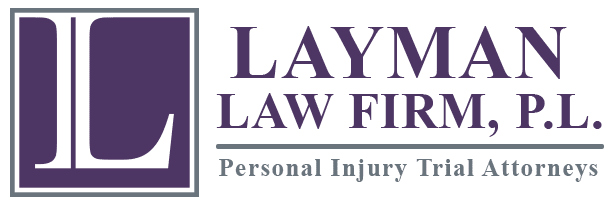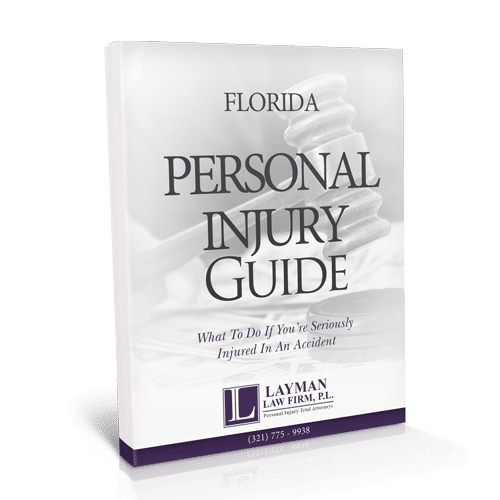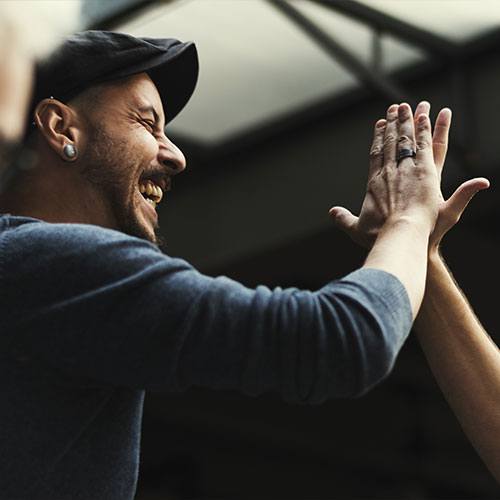Melbourne Personal Injury Lawyers
A personal injury accident often leaves the victim grappling with physical injuries, emotional trauma, and financial hardship. When the “accident” was partially or entirely caused by the negligence of another party, a victim may be entitled to compensation for injuries suffered as a result of that negligence.
If you were injured in a personal injury accident, a thorough understanding of your rights and legal options is crucial. Attempting to navigate the healthcare system, insurance companies, and the legal system on your own after an accident can be overwhelming. Instead of adding more stress and frustration to the situation, allow us to help. The experienced Melbourne personal injury lawyers at Layman Law Firm, P.L. have extensive experience and a wealth of resources we can utilize to make sure the at-fault party (or parties) are held accountable for causing or contributing to the accident. We will aggressively advocate on your behalf to secure compensation for all the injuries you suffered in the accident.
What Is a Personal Injury Accident?

As the name implies, an intentional tort is one in which the at-fault party intended to cause harm. Assault (which can also be a criminal offense) is an example of an intentional tort.
Strict liability torts do not require any actual fault on the part of the responsible party. They only require a victim to suffer an injury. In some states, dog bites are strict liability torts.
Most personal injury accidents, however, are negligent torts. Negligence requires an injured victim to prove four elements:
- That the defendant owed a duty of care to the victim.
- That the defendant breached the duty of care.
- That the breach caused an injury.
- Damages
Common Examples of Personal Injury Accidents
A personal injury accident can be the result of a wide variety of circumstances. There are, however, some common examples of personal injury accidents, including:
- Car accidents
- Trucking accidents
- Pedestrian accidents
- Bicycle accidents
- Bus accidents
- Boating and jet ski accidents
- Pool and drowning accidents
- Medical errors
- Defective product injuries
- Dog bites
- Catastrophic injury accidents
- Birth injuries
- Wrongful death accidents
Compensation in a Personal Injury Accident

Compensation in a personal injury lawsuit can include both economic and non-economic damages. Economic damages represent out-of-pocket expenses while non-economic damages compensate a victim for emotional and psychological injuries caused by the accident. Damages may include compensation for:
- Medical expenses
- Rehabilitation and other care costs
- Lost income
- Loss of future earning capacity
- Physical and emotional pain and suffering
- Diminished qualify of life
In a wrongful death lawsuit, compensation may be awarded to a claimant if the victim was a spouse or parent who can no longer provide the companionship, care, and support they provided prior to the accident.
Steps to Take If You Are Injured in a Melbourne Personal Injury Accident

- Contact the police. It is always a good idea to call the police and make an official report when you are injured in an accident. Even if the police are not required to manage the accident scene, contacting the police and making a report helps establish what happened and who was involved.
- Get a complete medical evaluation done immediately. Go directly to the emergency room to be evaluated by a physician. Doing so is the only way to identify all injuries, including potentially life-threatening injuries that may not present symptoms until hours (even days) after the injury occurred. Going directly to the hospital for an evaluation also helps establish that your injuries were caused by the accident which is important if you pursue a personal injury lawsuit.
- Document the accident and your injuries. Take photos of the accident scene/circumstances when you can. Gather names and contact information for all involved parties and witnesses. Start a file for medical bills and treatment notes, proof of lost wages, property damage estimates, counseling expenses, and other related damages.
- Consult with an experienced attorney. Always contact an experienced personal injury lawyer before discussing the accident with anyone, including an insurance company representative. If another party was clearly at fault in the accident, you will likely be contacted by their insurance company shortly after the accident. It is imperative to keep in mind that the goal of the insurance adjuster is to settle the claim as quickly as possible and for as little as possible. They may offer you what sounds like a decent sum of money; however, your claim may be worth considerably more than what they initially offer. An experienced Melbourne personal accident injury lawyer can evaluate the accident and your injuries and advise you whether accepting an offer is in your best interest or not.
Contact the Experienced Melbourne Personal Injury Accident Lawyers at Layman Law Firm, P.L.
If you were injured in a personal injury accident, or you lost a family member in one, contact the experienced Melbourne personal injury accident lawyers at Layman Law Firm, P.L. to discuss your legal options. We are dedicated to making sure that victims who were injured in a preventable accident are fully and fairly compensated by the responsible party or parties. Contact the team today for your free initial consultation by calling 321-773-2111 or by filling out our convenient Intake Evaluation Form online.






